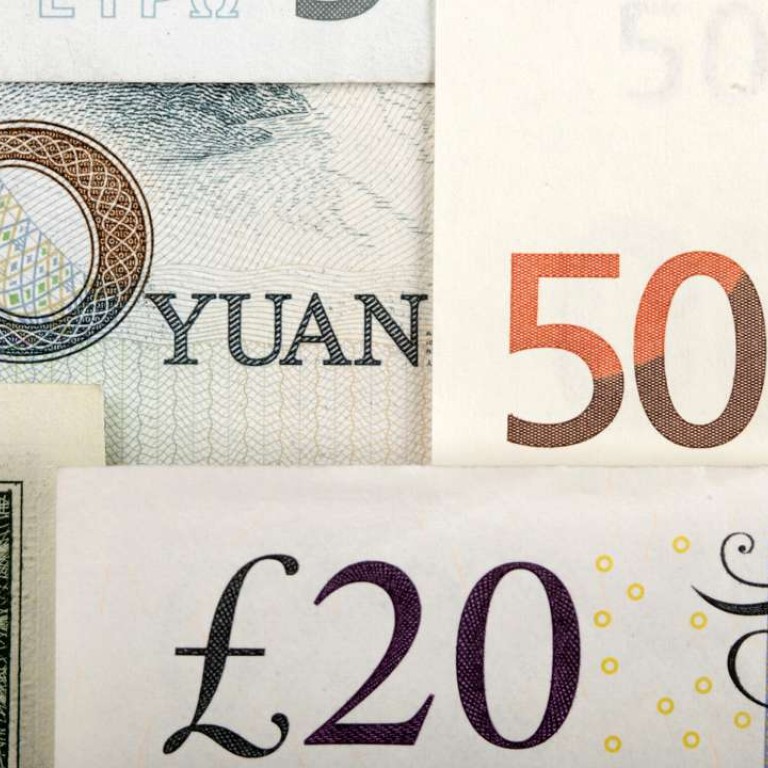
Is China’s dream to make yuan an alternative to the US dollar now falling apart?
Fall in renminbi’s value since October shows that challenging US dollar’s status will be long process, say analysts
Only a few years ago, the Chinese currency seemed on an unstoppable path to challenge the US dollar’s dominant position in the international monetary system.
Challenging the status of the US dollar is a very long process because the yuan is not freely convertible
After all, the yuan was backed by a rapidly growing economy, which the International Monetary Fund (IMF) said in 2014 had overtaken America to become the world’s largest in terms of purchasing power parity, which enables you to compare how much you can buy for your money in different countries.
It also had a unified centralised state that was ready to defend the currency’s value and reputation.
The yuan was accepted by the IMF a year ago as the third-largest component currency of its accounting unit, the special drawing rights basket, granting the yuan a nominal international reserve currency status along with the US dollar, the euro, the British pound and the Japanese yen, even though the yuan is notfreely convertible.

However, the yuan’s take-off as a global currency has proved bumpy during the past 12 months with many of its early forays withering due to economic woes at home and a strong dollar.
While Beijing has received an international endorsement for its yuan ambitions, as seen in a Group of 20 communiqué, the market’s appetite for the yuan is fizzling quickly, holding back Beijing’s dream of wrecking “the dollar hegemony”.
Lin Caiyi, chief economist at Guotai Junan Securities, said the yuan’s weakening against the US dollar had already reduced its attractiveness for retail and corporate investors.
“The internationalisation of a currency usually comes hand in hand with its strong value,” Lin said.
Donald Trump being elected [as US President] has intensified the likelihood of a Federal Reserve rate rise. Under such circumstances, the yuan will be weak
“Whether a currency is accepted by overseas investors and trade institutions depends mainly on their willingness to hold such currency, with expectations that it will appreciate.
“Donald Trump being elected [as US President] has intensified the likelihood of a Federal Reserve rate rise. Under such circumstances, the yuan will be weak.”
Since October, the yuan has lost more than 3 per cent of its value against the US dollar and both onshore and offshore the yuan is now trading at an eight-year low of 6.9 to the dollar. With market expectations lingering that the yuan will depreciate, it has become a less favoured currency for international trade.
Last month, the euro surpassed the yuan to be the second most active currency in trade finance, according to a monthly report from Swift, a global financial network used by banks to transfer capital, which has tracked the yuan’s progress towards becoming a global currency since 2011.
According to the report, three years ago, when expectations for the yuan to appreciate were high, it rose to be the second most active currency for trade finance with a share of about 8 per cent.
Since the yuan started depreciating in 2014, its usage has been decreasing to its current share of 4.6 per cent.
In the near term, it will be more difficult for the yuan to challenge the US dollar. Overtaking the dollar can be an aspiration, but we are not there yet
The yuan also slipped by one position in October to become the sixth most actively used currency for international payments, after the Canadian dollar.
Eddie Cheung, a Hong Kong-based foreign exchange strategist at Standard Chartered, said the yuan was losing its appeal quickly, although “a complete pullback” in yuan trade payments was not happening.
“In the near term, it will be more difficult for the yuan to challenge the US dollar,” Cheung said. “Overtaking the dollar can be an aspiration, but we are not there yet.”
The offshore yuan market in Hong Kong is currently shrinking, and the dim sum bond market – bonds issued outside China but denominated in renminbi – is withering.
China’s strong intervention in the Hong Kong yuan market in January pushed the overnight rate for borrowing yuan to 66.8 per cent, when Beijing was determined to keep the yuan exchange rate stable at the cost of squeezed liquidity.
Claire Huang, a Hong Kong-based China economist at Societe Generale, said: “Challenging the status of the US dollar is a very long process because the yuan is not freely convertible ... and the reform on capital accounts for now is mostly one-way, allowing foreign capital to enter the mainland.”
If the yuan is to truly challenge the dollar, it will be a long-term historical process and it would be unrealistic to expect immediate results in just a few years.
Even when the US industrial output exceeded that of Britain as early as 1894, it took another half century, including two world wars, before the dollar secured its position as the world’s chief reserve currency at the Bretton Woods conference.

